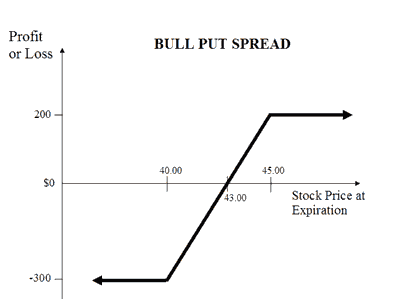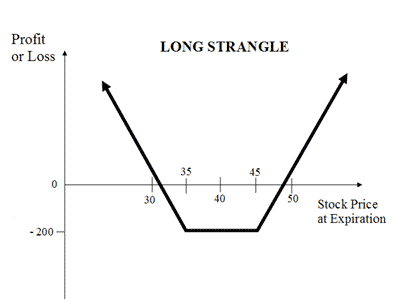 Zerodha (Trading & Demat Account)
Zerodha (Trading & Demat Account)
FREE Equity Delivery and MF
Flat ₹20/trade Intra-day/F&O
 Zerodha (Trading & Demat Account)
Zerodha (Trading & Demat Account)
FREE Equity Delivery and MF
Flat ₹20/trade Intra-day/F&O

|
|
Compare Bull Put Spread and Long Strangle (Buy Strangle) options trading strategies. Find similarities and differences between Bull Put Spread and Long Strangle (Buy Strangle) strategies. Find the best options trading strategy for your trading needs.
| Bull Put Spread | Long Strangle (Buy Strangle) | |
|---|---|---|
 |
 |
|
| About Strategy | A Bull Put Spread (or Bull Put Credit Spread) strategy is a Bullish strategy to be used when you're expecting the price of the underlying instrument to mildly rise or be less volatile. The strategy involves buying a Put Option and selling a Put Option at different strike prices. The risk and reward for this strategy is limited. A Bull Put Strategy involves Buy OTM Put Option and Sell ITM Put Option. For example, If you are of the view that the price of Reliance Shares will moderately gain or drop its volatility in near future. If Reliance is currently trading at Rs 600 then you will buy an OTM Put Option at Rs 700 and a sell an ITM Put Option at Rs 550. You will make a profit when, at expiry, Reliance closes at Rs 700 level and incur losse... Read More | The Long Strangle (or Buy Strangle or Option Strangle) is a neutral strategy wherein Slightly OTM Put Options and Slightly OTM Call are bought simultaneously with same underlying asset and expiry date. This strategy can be used when the trader expects that the underlying stock will experience significant volatility in the near term. It is a limited risk and unlimited reward strategy. The maximum loss is the net premium paid while maximum profit is achieved when the underlying moves either significantly upwards or downwards at expiration. The usual Long Strangle Strategy looks like as below for NIFTY current index value at 10400 (NIFTY Spot Price): Options Strangle Orders OrdersNIFTY Strike Price Buy 1 Slightly OTM PutN... Read More |
| Market View | Bullish | Neutral |
| Strategy Level | Advance | Beginners |
| Options Type | Put | Call + Put |
| Number of Positions | 2 | 2 |
| Risk Profile | Limited | Limited |
| Reward Profile | Limited | Unlimited |
| Breakeven Point | Strike price of short put - net premium paid | two break-even points |
| Bull Put Spread | Long Strangle (Buy Strangle) | |
|---|---|---|
| When to use? | This strategy works well when you're of the view that the price of a particular underlying will rise, move sideways, or marginally fall. |
A Long Strangle is meant for special scenarios where you foresee a lot of volatility in the market due to election results, budget, policy change, annual result announcements etc. |
| Market View | Bullish When you are expecting a moderate rise in the price of the underlying or less volatility. |
Neutral When you are unsure of the direction of the underlying but expecting high volatility in it. |
| Action |
A Bull Put Strategy involves Buy OTM Put Option + Sell ITM Put Option. For example, If you are of the view that the price of Reliance Shares will moderately gain or drop its volatility in near future. If Reliance is currently trading at 600 then you will buy a OTM PUT OPTION at 700 and a sell a ITM PUT OPTION at 550. You will make a profit when at expiry Reliance closes at 700 level and incur losses if the prices fall down below the current price. |
Suppose Nifty is currently at 10400 and you expect the price to move sharply but are unsure about the direction. In such a scenario, you can execute long strangle strategy by buying Nifty at 10600 and at 10800. The net premium paid will be your maximum loss while the profit will depend on how high or low the index moves. |
| Breakeven Point | Strike price of short put - net premium paid |
two break-even points A Options Strangle strategy has two break-even points. Lower Breakeven Point = Strike Price of Put - Net Premium Upper Breakeven Point = Strike Price of Call + Net Premium |
| Bull Put Spread | Long Strangle (Buy Strangle) | |
|---|---|---|
| Risks | Limited Maximum loss occurs when the stock price moves below the lower strike price on expiration date. Max Loss = (Strike Price Put 1 - Strike Price of Put 2) - Net Premium Received Max Loss Occurs When Price of Underlying <= Strike Price of Long Put |
Limited Max Loss = Net Premium Paid The maximum loss is limited to the net premium paid in the long strangle strategy. It occurs when the price of the underlying is trading between the strike price of Options. |
| Rewards | Limited Maximum profit happens when the price of the underlying moves above the strike price of Short Put on expiration date. Max Profit = Net Premium Received |
Unlimited Maximum profit is achieved when the underlying moves significantly up and down at expiration. Profit = Price of Underlying - Strike Price of Long Call - Net Premium Paid Or Profit = Strike Price of Long Put - Price of Underlying - Net Premium Paid |
| Maximum Profit Scenario | Both options unexercised |
One Option exercised |
| Maximum Loss Scenario | Both options exercised |
Both Option not exercised |
| Bull Put Spread | Long Strangle (Buy Strangle) | |
|---|---|---|
| Advantages | Allows you to benefit from time decay in profit situations. Helps you profit from 3 scenarios: rise, sideway movements and marginal fall of the underlying. |
|
| Disadvantage | Limited profit. Time decay may go against you in loss situations. |
The strategy requires significant price movements in the underlying to gain profits. |
| Simillar Strategies | Bull Call Spread, Bear Put Spread, Collar | Long Straddle, Short Strangle |

Add a public comment...

FREE Intraday Trading (Eq, F&O)
Flat ₹20 Per Trade in F&O
|
|